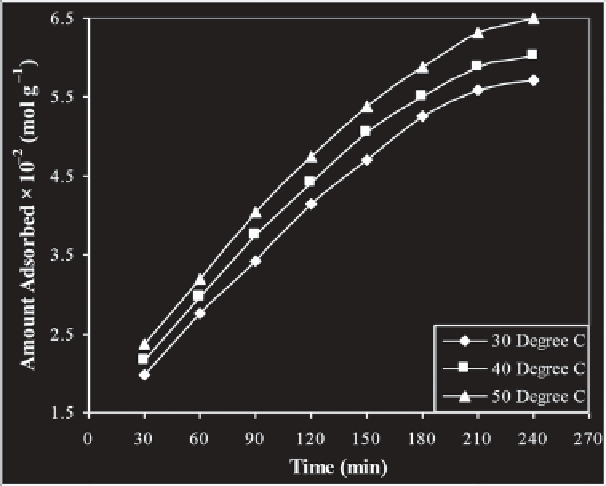Environmental Engineering Reference
In-Depth Information
due to the increase in surface area of Hen Feather and availability of more
adsorption sites. However, after an optimum dose there is no significant
change in the adsorption rate for both the adsorption systems, which may
be due to saturation of all the available active sites of the adsorbents.
11.4.2.5
Effect of Contact Time
For both the Azo dyes, contact time studies reveal that in general, as time
passes, adsorption increases and finally attains saturation. It is found that
Hen Feather, Tartrazine takes about 4 hours (Figure 11.6) and Amaranth
takes about 2 hours (Figure 11.7) to attain saturation.
11.5
Adsorption Isotherm Models
Preliminary investigations help in determining various working conditions
to achieve optimum adsorption of the dye. The results obtained during pre-
liminary investigations are now used to verify various isothermal models.
This would be another step to develop efficient dye removal methodology
because equilibrium sorption isotherms are fundamentally very significant
Figure 11.6
Effect of contact time on the uptake of Tartrazine (9 × 10
-5
M, pH 3.0)
by Hen Feathers at different temperatures.

Search WWH ::

Custom Search